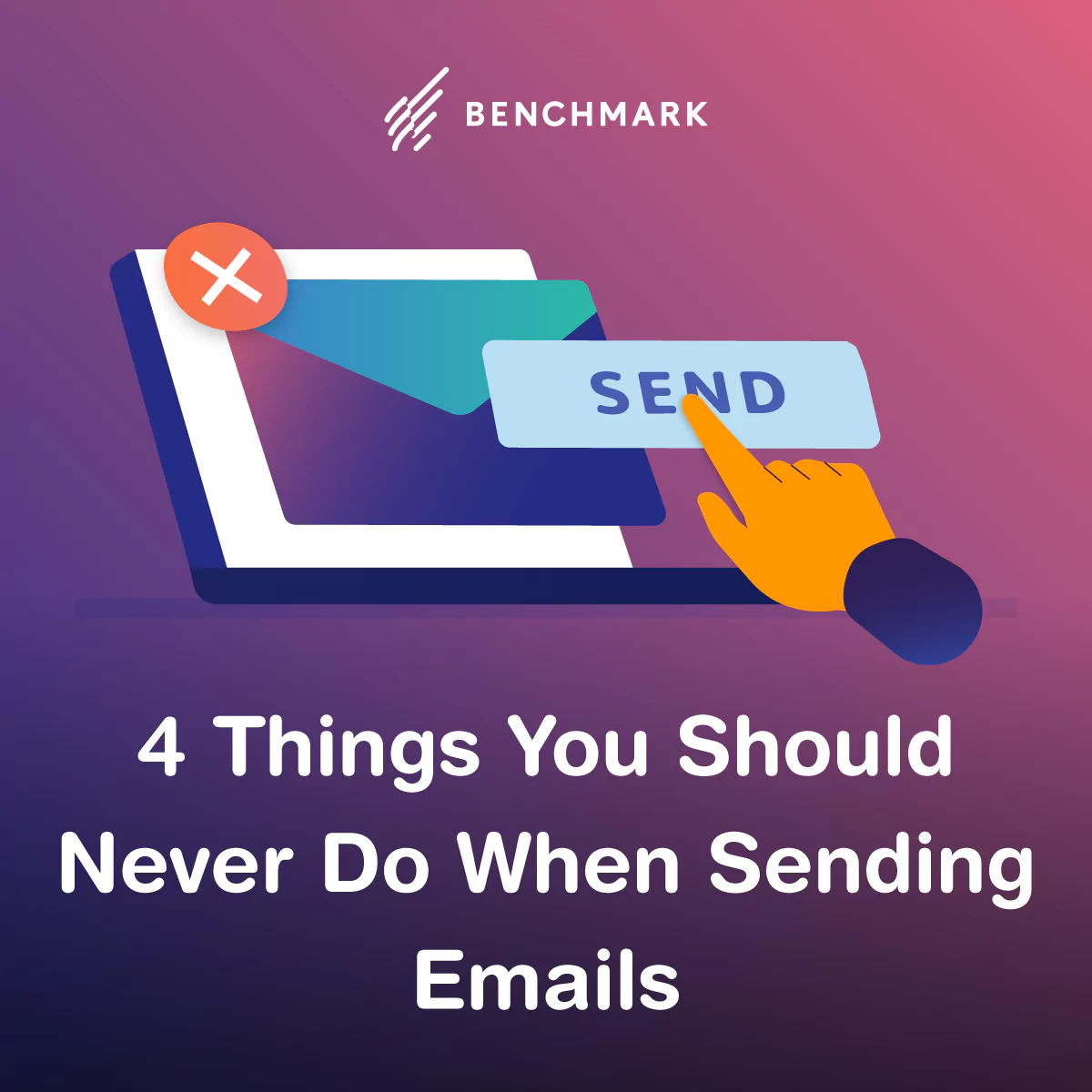
A lot of marketers put tons of time and effort into figuring out what they should be doing when they send emails, but not enough time thinking about what they shouldn’t be doing. Email marketing mistakes and bad practices can cost you subscribers and negatively impact the results of your outreach. And you might not even be aware that you’re making them.
Every email you send has a lot of potential, particularly regarding your key conversions and ROI. If you do not see the results you’re expecting, chances are, one of these four mistakes could be the culprit.

Mistake #1: Giving Little Thought to Your Subject Line
Email subject lines are important. Like, really, really important. Sixty-nine percent of email recipients report flagging an email as spam based purely on the subject line. With the average open rate for emails at a paltry 17.92%, there’s a lot riding on getting the subject line right — and a lot of reasons that you might be getting it wrong.
Your subject line is the first impression that you make with your email recipients, and it plays a huge part in whether or not someone decides to open your message. Make your subject lines inviting, enticing, and personal. And avoid bad behavior, like the inclusion of filler words or spam trigger words, or the use of all capital letters.
Mistake #2: Not Adding a Human Touch
People like hearing from real people. This human-to-human connection is integral in marketing, not just for your emails but for most — if not all — of the techniques that you use to guide leads along the buyer’s journey.
Your recipients don’t want to feel like they’re at the other end of a robot, or that they’re receiving rote communications. Marketing emails without a clear, designated, and real person behind them are less personal and make your recipients feel like they’re just another fish in a pond. Always have your emails come from an actual person within your organization, ideally a sales rep or a marketing team member. If you’re sharing big company news, the email could come from your president or CEO.
Keep in mind that this person doesn’t have to really be sending off the email from their computer. The idea is to attach their name and contact information for a personal touch, and so that your recipients have a direct person to reach out to if they have a question or comment.
Mistake #3: Not Personalizing
Personalizing is critical to effective email marketing. Sending the same email to your entire subscriber list without giving a thought to each person’s pain points and where they are in the buying process isn’t a savvy time saver — it’s lazy. It’s also a dead-end technique. Emails that aren’t personalized aren’t going to be ones that people want to open, which helps explain why those that are personalized deliver six times higher transaction rates.
Make sure that each email you send out is something that the person receiving it needs and will find value in. Fill it with content that is specific to the stage of the buyer’s journey that they’re in, and that the message addresses them by name. Take into consideration their industry too, and whether or not they work at a small business, enterprise, or agency, or within a particular vertical.
Eighty-two percent of businesses see an increase in open rates when they personalize their emails. The quickest way to do it? Use marketing automation software. This will make it easy to segment your contact lists and attach personal details to every message that goes out, and will also help you instantly see the results of doing so.
Mistake #4: Over-Sending
You need to find the sweet spot when it comes to email frequency. People receive a ton of emails every day, and will often go on an unsubscribing spree because of it. Very few recipients are going to be opening emails that you send every day or every other day. And if they are, they’re probably already big fans of your brand. The rest of your recipients will get annoyed by the frequency, and will potentially opt-out for the sake of their inbox.
As for how often you should be sending emails, aim for one or two a week, tops. It’s enough to keep the connection strong without coming off as too pushy.
Are you guilty of any of these email marketing mistakes? Change up your strategy and your subscribers — and your conversion rates — should be a whole lot happier.



